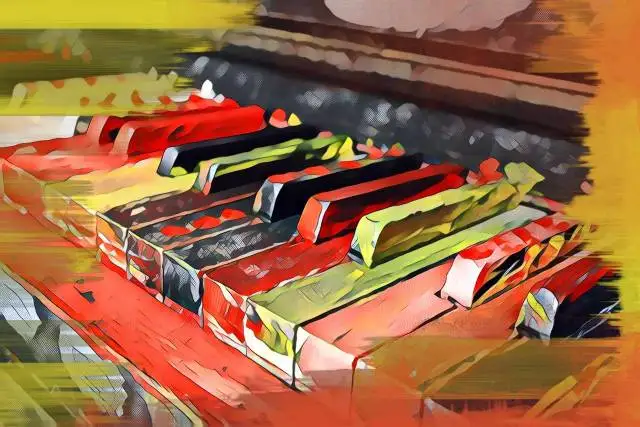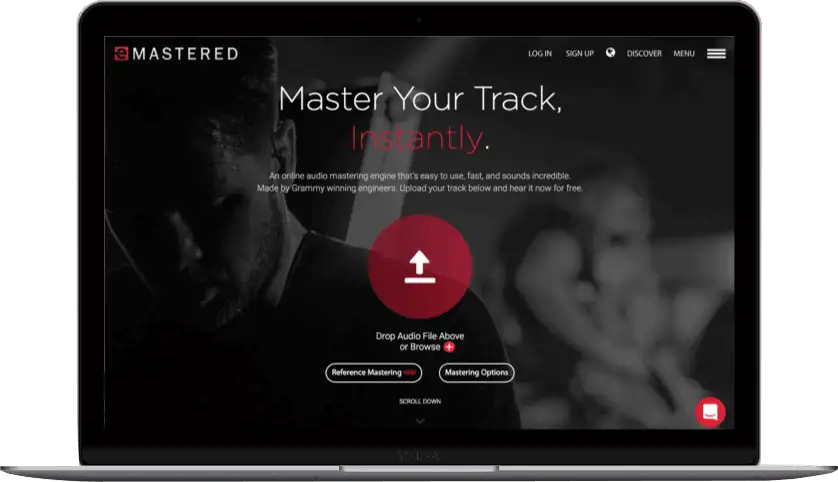The music industry is evolving faster than ever, with new trends popping up constantly and reshaping what’s hot. In this whirlwind of music, one genre that's made a huge impact lately is Amapiano . The genre emerged from South Africa in the early 2010s and quickly went from a local sound to a global sensation.
The name "Amapiano" roughly translates to “the pianos” in Zulu, and it sounds like what you'd expect. Think smooth, jazzy house music mixed with deep bass, rhythmic percussion, and an utterly infectious groove.
Artists like Tyla have played a big role in bringing Amapiano to the U.S .
In terms of how Amapiano stacks up against other house music genres, it's certainly its own thing. In this article, we’ll take a closer look at what makes Amapiano so special, how it rose to popularity, and why it's become a worldwide staple.
The Origins of Amapiano Music
Amapiano first bubbled up in the early 2010s from the townships of South Africa’s Gauteng province. In the Johannesburg area, places like Soweto , Alexandra , Vosloorus , and Katlehong became hotbeds of the emerging genre. Around the same time, the city of Pretoria (South Africa’s administrative capital) put its stamp on the sound, especially in areas like Atteridgeville and Mamelodi .
In these neighborhoods, local DJs would often jam on keyboards over slow house beats at street parties and taxi ranks, inadvertently creating a new style of house music. There’s even a bit of friendly debate about which township birthed Amapiano, but the truth is it sprouted from the “soil of the streets” across multiple communities.
One reason Amapiano caught on in the townships is its musical DNA, which blends familiar South African genres. It draws heavily from Kwaito , which is a 1990s-era South African house music style known for its laid-back, groovy, deep house sounds.
While Johannesburg’s townships were key in Amapiano’s birth, the Pretoria scene is widely credited with giving the genre much of its early character. Pretoria DJs had their own twist on house music. In fact, a local sub-style known as Bacardi house featured thumping bass and percussive beats that would later inform its signature sound.
Early Pretoria pioneers like Kabza De Small (who hails from a town near Pretoria) started folding the new piano-centric grooves into their sets.
As the new style spread on the underground, it still didn’t have an official name. Early on, people just casually called it number (or “iNumba” in township slang).
The breakthrough in naming came thanks to MFR Souls , a producer/DJ duo from the East Rand. MFR Souls, which is made up of Tumelo Nedondwe and Tumelo Mabe , was among the first to fully embrace this piano-driven house sound.
According to fellow DJ Stokie , “I heard this unique sound from these other DJs called MFR Souls…and I loved it”.
MFR Souls realized their music needed a proper identity. Sometime around 2014–2015, they coined the term “Amapiano,” which in Zulu literally means “the pianos”.
By 2019, Amapiano was exploding in popularity on the streets and online, yet it was still carving out space in mainstream media. A major turning point came when the sound got a stamp of approval on national television. South Africa’s popular music showcase Live AMP (aired on SABC1) decided to dedicate a segment to Amapiano, broadcasting a live Amapiano DJ mix on prime-time TV.
For context, Live AMP was a big weekly music show, and having an all-Amapiano mix on it was a big deal . It was the first time many TV viewers heard this new sound, and it instantly validated Amapiano as more than just an underground trend.
Industry folks describe that Live AMP episode as a major endorsement for the genre, akin to a cosign saying, “This is the next big thing.” After that broadcast, even more clubs, radio stations, and record labels started paying attention to Amapiano.
The Sound of Amapiano Music
Now, let's talk about the key elements that actually make up Amapiano music, so you can start incorporating them into your own tracks.
Drums
The drum patterns in Amapiano are one of the genre's defining features.
They tend to be less aggressive compared to other house genres, giving it a more laid-back sound.
You'll often hear syncopated drum patterns that use kicks, claps, and hats, though it's the almighty log drum that defines the genre's groove. The log drum produces a deep, earthy sound that's often more prominent in Amapiano than any other type of house music.
You can hear it in Kabza De Small's "Amukelani," for example:
Kick drums in Amapiano are usually soft but punchy. They tend to sit back in the mix, keeping the tempo rolling subtly, and most of the time, they follow a 4/4 time signature .
Then, you'll typically hear hi-hats and shakers filling in the off-beat rhythms , to create more groove.
Bass
The bassline in Amapiano is often what anchors the track. It’s typically sub-heavy, though not too aggressive.
Just like the log drum , the bass sound in Amapiano can have a soft, low-end hum . It’s thick and rounded, designed to be felt more than heard. This bass plays a central role in laying the track’s foundation and giving it that deep, low-frequency, heavily syncopated feel.
Here's an excellent example from DJ Maphorisa:
Samples
Sampling is another crucial aspect of the Amapiano sound. This is where we get the emotional vibe of the given track.
The types of samples can vary from song to song, though there are a few specific elements that tend to pop up more than others.
Vocal chops are pretty prominent, especially those that have Afrobeat or R&B influences. Most of the time, they're pitched up or down and heavily tuned.
Beyond that, amapiano often incorporates jazz-inspired samples , including pianos , flutes , and saxophones . You can hear tons of chops and samples on Sha Sha's "Woza" below:
Vocals
Finally, we have the vocals, which play the role of connecting with the audience. As with Afrobeat, these songs' themes often reflect love , life , and community . If an Amapiano track has vocals on it, they'll typically be smooth and soulful, either using melodic singing and spoken word or chants .
Check out the vocals on Kabza De Small's "Sponono" and listen to how they reflect what you might hear on a typical afrobeat track:
Top Amapiano Artists
At this point, you should have a pretty good idea of what Ampiano music is. Of course, I want to make sure that you can continue exploring the Amapiano genre after you get done reading this article, so let's take a look at some of the most popular Amapiano artists in the game!
Kabza De Small
Kabza De Small , known as the “King of Amapiano,” was one of the first popular Amapiano artists and one of the most influential.
Emerging from Pretoria , his sound is a blend of deep, soulful piano melodies and laid-back drum grooves.
His 2016 album “Avenue Sounds” brought widespread attention to Amapiano, and his collaborations with DJ Maphorisa under the Scorpion Kings moniker have been hugely popular.
However, I recommend listening to his album Isimo , which is his most recent release to date. It has very uniquely uplifting music production that almost feels like a return to where the genre began.
DJ Maphorisa
One of the most prominent producers, DJs, and collaborators in the Amapiano music scene is DJ Maphorisa . Known for his versatility, he brings Afrobeat, deep house, and hip-hop influences to the genre, making his style distinctive.
As one half of the duo Scorpion Kings with Kabza De Small, Maphorisa has released some of the genre's biggest anthems, including “Izolo” and “Amantombazane”. His influence extends beyond Amapiano, though, and we've seen plenty of collabs across multiple genres, such as his work with Wizkid and Burna Boy.
However, he truly remains a central figure in Amapiano’s growth.
Focalistic
As a rising star in the Amapiano scene, Focalistic is one of the top South African artists in the game.
He has integrated Amapiano with hip-hop to create his own hybrid sound, which has earned him the title of "The President of Amapiano." His smash hit, "Ke Star," which features Vigro Deep , became one of the genre's most successful tracks, reaching millions of views on streaming platforms.
The Amapiano Sound
Over the past decade, Amapiano has quickly risen from the townships of South Africa to become a global sensation, gaining popularity for its unique fusion of piano melodies, log drum rhythms, and soulful vocals.
The genre has carved out its place in African music, offering a fresh take on lounge music and dance beats, providing the perfect soundtrack for dance challenges on social media platforms and easy, cafe-style listening.
If you want to explore all the genre has to offer, I highly recommend listening to Amapiano’s key artists, like Kabza De Small, DJ Maphorisa, and Focalistic, as they've played a significant role in shaping the genre's sound, and their influence can be felt not only within Amapiano but across other genres as well.
If you want to make this music on your own, start downloading some Amapiano sample packs and use them to reference what many pioneers have already done!





